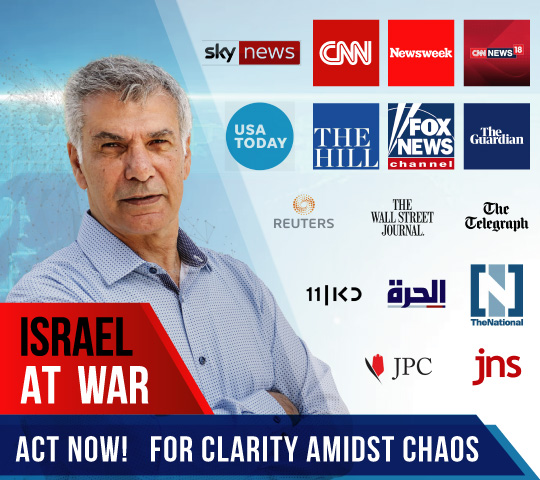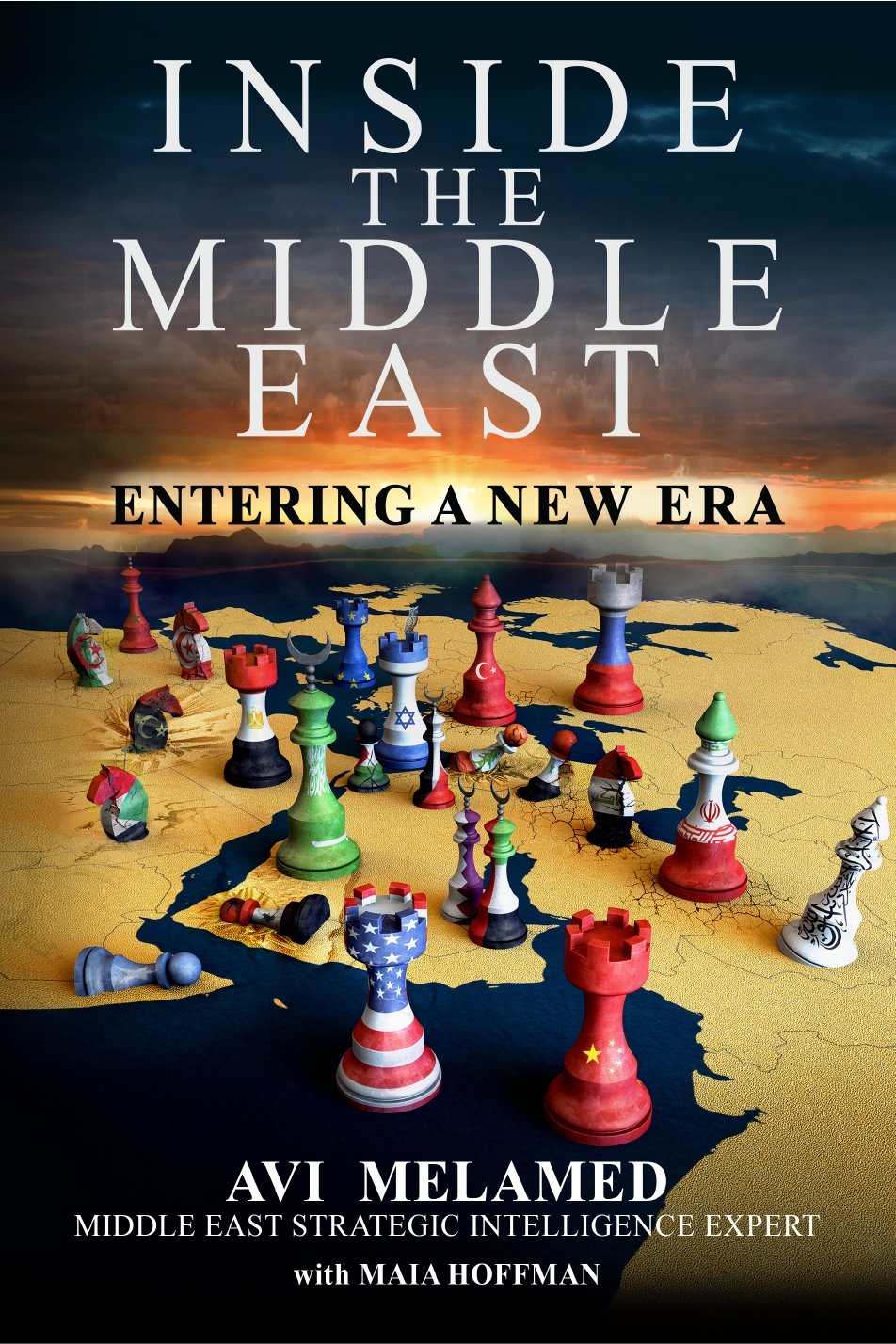|
Getting your Trinity Audio player ready...
|
A Bear in A Sad Circus
At the end of September 2015, a dramatic development took place. Russian warplanes began attacking targets in Syria. Russia argued their goal was to eliminate ISIS. Their stated goal is questionable for three primary reasons:
First, ISIS is primarily concentrated in eastern and northeastern Syria and Russian jets are focusing their attacks in northwestern and southeastern Syria, targeting almost exclusively the Syrian rebels in those areas.
Second, Russia has refused to participate in the international military campaign against ISIS.
Third, directly confronting ISIS may actually be counterproductive to Russian interests — it will increase the tension between Russia and its Muslim neighbors which will likely result in increasing attacks of Islamist militants inside Russia and it will lead to an influx of Islamists militants to fight Russian forces in Syria. In fact, immediately following Russia’s actions, in October 2015, the Muslim Brotherhood in Syria formally announced armed Jihad against the Russians in Syria and urged every Syrian capable of holding a weapon to fight the Russian invasion. Also in October, fifty-two Saudi clerics officially described the Russian attacks in Syria as “a crusader invasion” and urged Muslims worldwide to thwart Russian attacks by all means possible – including military action. And then, in the beginning of November an audio recording attributed to Ayman al-Zawahiri, Al-Qaeda’s leader, was released — in it Al-Zawahiri urged all Islamist militant groups — including ISIS — to join in the fight against the Russians.
What is interesting about this announcement is that in January 2014, Al-Qaeda formally announced that ISIS — which was at that time Al-Qaeda’s branch in Iraq — was no a longer part of Al-Qaeda. Ever since that split the two organizations have been engaged in a direct and indirect power struggle most clearly exhibited by the ongoing battles in Syria between Jabhat al-Nusrah, Al-Qaeda’s branch in Syria, and ISIS; but also demonstrated by fighting between al-Qaeda and ISIS in eastern Afghanistan; and the growing tension between supporters of al-Qaeda and ISIS in places like Jordan, Libya and Yemen. AL-Zawahiri’s message is viewed by some Arab analysts as an attempt by Al-Qaeda to reconcile or rehabilitate its relationship with ISIS. Ironically, if indeed Al-Zawahiri is looking to reconcile with ISIS, Russia’s direct involvement in the war in Syria — justified by Russia as a move aimed at the weakening of ISIS and militant Islamist terror — could actually result in the exact opposite outcome, and lead to the further strengthening of the militant Islamist camp and terror.
Thus, the question is — what is the reason for the Russians direct involvement in the war in Syria, whose clear goal — as of now — is to prevent the collapse and downfall of Assad?
To answer that question let us take a brief look at the picture on the ground in Syria at the end of 2015.
The Syrian rebel groups have made significant achievements on the ground-mostly in the northwest and southern parts of Syria, and have increasingly pushed Assad and his allies towards western Syria.
The Iran-Assad axis which includes Assad loyalists, units of the Iranian Revolutionary Guards (IRG) and Iranian proxies like Hezbollah, Iraqi, and Afghan Shi’ite militias, is cracking under the mounting pressure of the Syrian rebels. Many dozens of Iranian soldiers and officers — including high ranking officers — have been killed thus far in Syria. As a result, there is growing discontent and criticism within Iranian public opinion. That may explain the fact that western and Israeli senior military sources indicate that Iran has reduced its military presence in Syria. Reportedly, at the height of the Iranian direct involvement to save Assad, Iran had 2,000 Iranian soldiers in Syria — the number of Iranian soldiers thought to be in Syria today is between 700 and 800.
On the eve of the war in Syria, Iran and Assad were the unquestionable powers in Lebanon and Syria. At the end of 2015, their dominance in both arenas has substantially eroded. Assad has lost control over most parts of Syria, he is estimated to control about 20 percent of the country, and he is no longer perceived as legitimate in the eyes of most Western powers or the majority of the Arab world.
Hezbollah, the Lebanese Shi’ite organization, which is the most significant Iranian proxy in the war in Syria is also deeply sinking in the Syrian mud. According to the most cautious estimations — some 1,000 of its elite fighters have been killed and thousands have been wounded in the war. As a result, Hezbollah is facing growing anger and increasing discontent among the Shi’ites in Lebanon for the death of their sons in a war they never wanted to be a part of. There are increasing reports of Hezbollah militants refusing to go back to Syria and recruiting new militants for the war is becoming increasingly difficult.
Some analysts surmise, that as a result of their dire situation, the Iran-Assad axis has acquiesced in relinquishing control over most parts of Syria – and is alternatively striving to establish an ‘Alawite protectorate — “‘Alawistan” if you wish — in western Syria as its power base. However, achieving that goal seems to be more and more difficult — the likelihood of the establishment of an “’Alawistan,” let alone its endurance, is highly questionable for a number of reasons:
First, Iran’s ability to send significant military reinforcement to Syria is doubtful; as mentioned earlier, in December 2015 according Western military sources, Iran is substantially withdrawing its forces from Syria.
Second, it is doubtful that Hezbollah could secure the southern side of such entity. Hezbollah’s limited manpower does not allow it to stretch its forces along dozens of miles, and at the same time, thwart the growing threats of revenge from Sunni Syrian and non-Syrian rebel groups already operating along the Lebanese-Syrian border.
Third, should such an entity be established, it will be surrounded from the north, east, and southeast by hostile Sunni forces. As a fact, ‘Alawite communities along the Syrian coast are already exposed to daily rocket attacks by the rebels. Iran and Hezbollah cannot secure the ‘Alawites for long.
Ironically, the only buffer zone between the Syrian ‘Alawites and vengeful Syrian Sunnis are the Russians, who are currently located in western Syria, and the Sunni Arab states and Turkey who can restrain the ravenous Syrian Sunnis.
Desperate and running out of possibilities and steam – the Iran-Assad axis approached Russia for its help to save Assad and thus ensuring Iran’s continuing dominance in Syria, and its substantial influence in Lebanon.
If that is the case, the question is — with all of the challenges their involvement in Syria would pose, some of which I outlined above — why did Russia agree? What’s in it for Russia?
The answer is simple — but important. Russian President, Vladimir Putin identified a strategic opportunity to resume Russia’s presence in the Mediterranean. In 2015, forty years after it lost its major stronghold in the Middle East in Egypt, Russia has returned to the Middle East through the Syrian door. The bear is back in the sad Middle East Circus — and he is back to stay .
Russian’s resumed presence in the eastern Mediterranean offers the country valuable dividends. A Russian stronghold near major arenas of instability like Iraq, Lebanon and Syria; and in proximity to the massive gas reserves discovered in the eastern basin of the Mediterranean Sea; and at Europe’s southern doorstep, provides Russia a useful card in the global balance of power. Simply put — the war in Syria serves Putin’s vision to make Russia — again — a leading global player and power.
For the crumbling Iran-Assad axis Russia’s support has a price tag, as their interests will be largely subdued to Russia’s interests — which are not exactly identical to Iran’s. A clear manifestation of this can be seen when it comes to another regional player — Israel.
Over the past 30 years, Iran, under the slogan of Al- Muqawama — “The Resistance” — whose goals are — an alternate world order in the spirit of radical Islam, the eradication of Western influence in the region, and most importantly, the unrelenting struggle against Israel until it is annihilated — has skillfully developed an arsenal of allies like Syria and proxies like the Shi’ite Hezbollah in Lebanon and the Palestinian Sunni Hamas and Islamic Jihad (IJIP) in the Gaza Strip. This alliance is called the Axis of Resistance and it is the card used by Iran to expand its influence in the region.
In December 2015 Major General Mohammad Ali Jafari, the commander of the Iranian Revolutionary Guards (IRG), announced that the borders between Iraq, Syria and Lebanon should be erased because it is all part of the “axis of resistance” and Iran’s presence in those areas aims to defend Iran. The translation of this message is — among other things — that Iran wants to broaden its military front with Israel through using the Golan Heights as another arena from which Iran — via Hezbollah and other proxies supported by Iran — can launch attacks on Israel (for more on that matter read my article A Significant Message published in January 2015).
The statement of Jafari clearly does not conform to the Russian outlook on that issue. In September 2015 the Russian President, Vladimir Putin, met with Israeli Prime Minister Benjamin Netanyahu. In that meeting, Putin formally acknowledged Israel’s concerns regarding the risks of the spillover of the war in Syria into Israel. Putin’s statement was designed for Iranian ears. It was a message from Russia that the Golan Heights is off limits.
And as they say — actions speak louder than words. It is worthy to note that since the Russian involvement in the war in Syria Israel has reportedly conducted a number of aerial attacks in Syria targeting weapons shipments to Hezbollah. In December 2015, one of these alleged Israeli attacks killed Hezbollah senior commander Samir Kuntar, who was appointed by Hezbollah to design and carry out military attacks on Israel from the Golan Heights. It is possible that other Iranian officers were killed in that attack as well. All these operations which have been attributed to Israel have taken place in spite of Russia’s sophisticated radar systems, undisturbed by Russian anti-missile systems and Russian jet fighters deployed in Syria. One could interpret that as yet another Russian message to Iran.
From the Israeli perspective, the Russian presence in the eastern Mediterranean can also play a significant — and positive — role in the context of the disputed gas fields between Israel and Lebanon in the Mediterranean Sea. Hezbollah (guided by Iran) is already using the controversial fields to build the “case” for the next military round with Israel. In Israeli eyes, Russia can — and likely will — restrain Iran and its proxy.
For now, as shown above, Israel benefits from the Russian presence. It is very possible, that Israel and Russia are now experiencing the beginning of a wonderful friendship. And the Iranians are not so happy about that.
Given the complex situation in Syria, it seems as if the odds for an arrangement ending the war are slim. However, following the signing of the Vienna Agreement I published an article Vienna, Aden, Damascus in which I predicted that “for the first time since the outbreak of the war in Syria, a potential path has opened that could lead to an arrangement that will end the war.”
And indeed a closer look suggests that though the task is challenging, it is not impossible. Because today the major factors involved — Assad, Iran, Hezbollah, the Syrian rebels, Qatar, Saudi Arabia, Turkey, Russia, Europe, and the United States have an interest in ending the war.
In Vienna in October 2015 Russia, Saudi Arabia, Turkey, and the United States held talks discussing possible guidelines for an arrangement in Syria.
Following that mini-conference, Iran was invited to participate in future talks which are scheduled to be held soon.
In December 2015, the United Nations Security Council unanimously agreed on a path to end the crisis in Syria. UNSC Decision 2254 calls for the establishment of a new government in Syria representing all Syrian factors and the holding of free elections within 18 months.
Also in December, Saudi Arabia hosted a conference which was attended by the major Syrian opposition and rebel groups who made it clear that they were willing and looking for diplomatic path to end the crisis in Syria. During the conference a Russian air strike, on December 25, 2015 killed Zahran ‘Alush, the commander of the Jeish al-Islam (Islam’s army) the most important Syrian rebel group which is backed by the Saudis. In spite of this dramatic event during the conference, the rebels did not change their mind and maintained their desire for a diplomatic solution.
In January 2016, another round of talks under the auspices of the UN in expected to take place.
What are the calculations of the players involved in the war in Syria? Why are they interested in finding an arrangement? What will be the guide lines of such an arrangement on the ground?
I explore that, as well as many other issues and developments related to the Middle East today and in the near future in my upcoming book Inside the Middle East — Making Sense of the most Dangerous and Complicated Place on Earth, which will be published in February 2016.
To celebrate the release of Inside the Middle East, I will be available for speaking and book signing events in North America from mid-February through late April 2016. Please contact me if you would like to explore the possibility of hosting a lecture/book talk.
If you want to have a better understanding of the news and what really drives the unfolding events…
Read the latest book of Avi Melamed,
INSIDE THE MIDDLE EAST | ENTERING A NEW ERA, available now >>>
Follow me on Twitter @AviMelamed; Facebook @InsideTheMiddleEast; for more Videos on YouTube https://www.youtube.com/c/AviMelamed
I can always be reached at Av*@********ed.com
































































